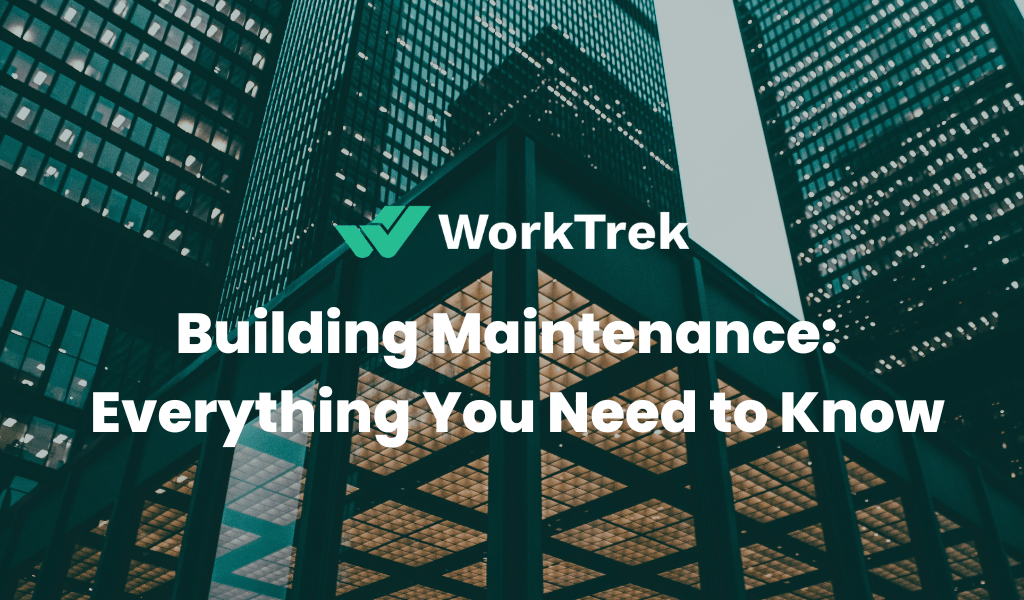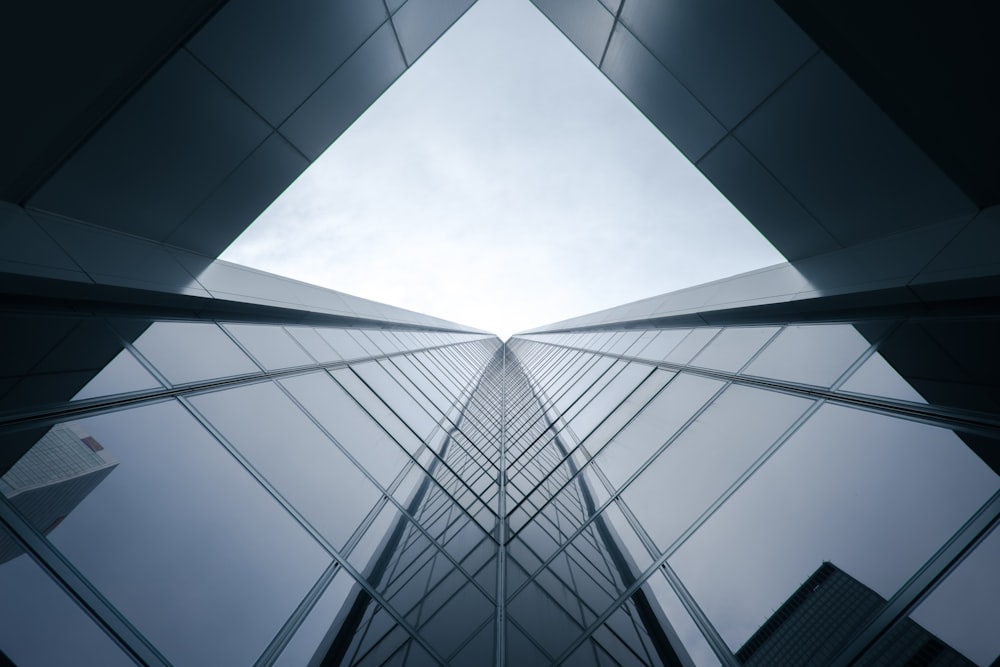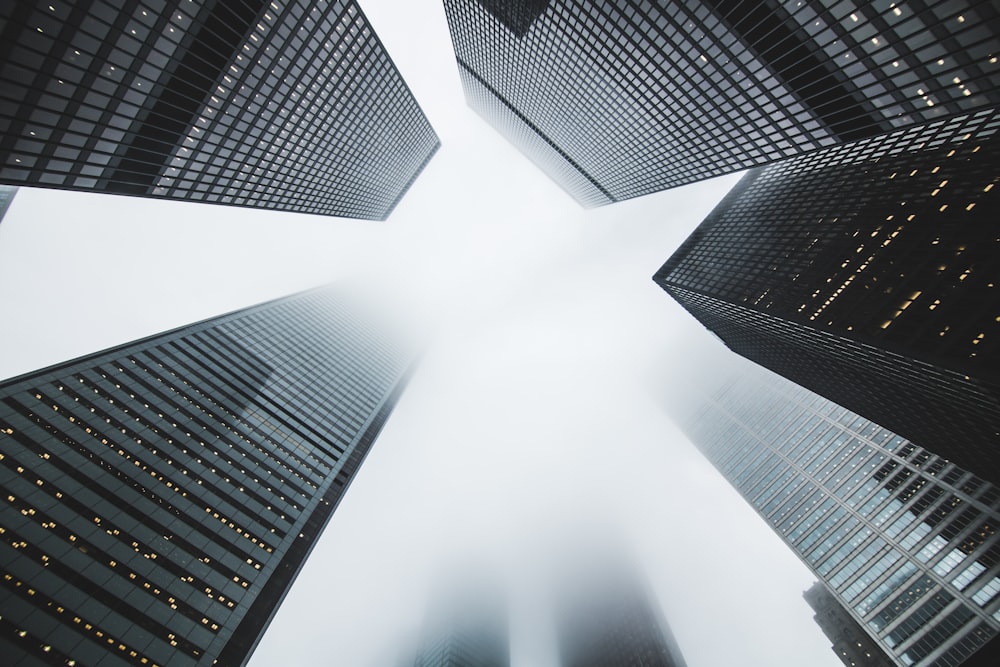Get a Free WorkTrek Demo
Let's show you how WorkTrek can help you optimize your maintenance operation.
Try for freeBuilding maintenance – Introduction
Building maintenance includes cleaning common areas, regular trash removal, and repairing damaged items. This may include inspections, repairs, and maintenance of electrical systems, heating and air conditioning systems, and other utility services.
Facility and building maintenance are critical to ensuring the safety, efficiency, and longevity of buildings. Managing a multi-unit building or home that requires regular maintenance can present landlords with new problems that you may not be familiar with. Preventative maintenance is critical to a building’s long-term viability, but not all landlords know how to manage these tasks effectively. To be successful at this, what you need is a quality building maintenance guide.
Leaving a building without regular inspections and repairs can result in costly repairs. By proactively checking for failures before they occur, you can save your business a lot of time and money. However, it can be hard to know where to start.
Learn about today’s building maintenance processes and how to create an effective preventative maintenance program.
What is Building Maintenance?
Building maintenance involves a variety of tasks, depending on the company or organization. It involves a lot of work “behind the scenes” to ensure that a facility or building remains functional and comfortable for its occupants.
In some cases, building maintenance extends to outdoor campuses, including sprinkler management, lawn maintenance, and landscaping.
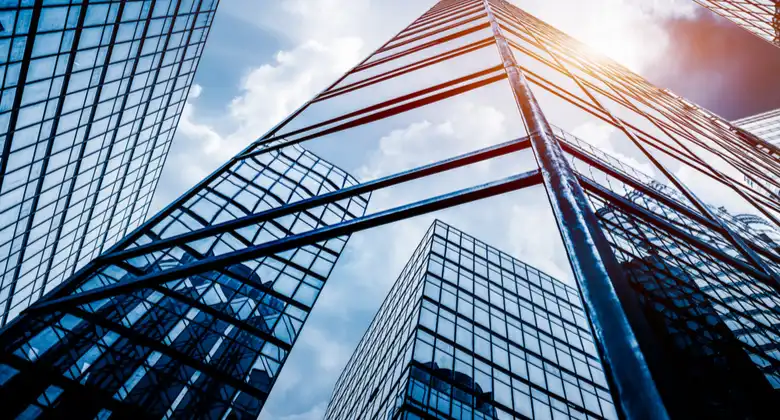
Types of Building Maintenance
Most building maintenance falls into three categories.
Preventive Maintenance
Preventive maintenance is routine maintenance performed on a regular basis to proactively address maintenance issues before they occur. It includes inspection, handling, replacing parts, and other tasks that prevent damage to building interiors and exterior structures. Plan and schedule preventive maintenance tasks on appropriate dates or at usage-based intervals.
Corrective Maintenance
When the damage becomes apparent, corrective maintenance measures restore the building to its optimum condition. The nature of these tasks depends on the type of building and the needs of its occupants. Unlike planned preventive maintenance, for example, corrective maintenance is performed in response to a problem reported through a service call.
Protective Maintenance
Protective maintenance protects building structures from harsh environmental conditions and deterioration. It involves the application of protective paints, sealants, coatings, and films to exposed surfaces such as columns, awnings, and other architectural surfaces. Depending on the climate, these areas of the building may need protection from ice, snow, salt, heat, humidity, and extreme weather conditions.
Types of Building Maintenance Workers
Maintenance personnel is critical in almost every operation to ensure that mechanical and electrical systems are functioning properly. They can work in a wide range of jobs, including plumbing, carpentry, and electrical repairs, while some specialize in the maintenance of certain types of machinery or equipment. Someone who enjoys doing things and is dexterous is likely to find work as a maintenance technician in a variety of fields and specialties. Cleaners, site managers, mechanics, and industrial machine operators make up the majority of maintenance jobs.
Maintenance managers manage maintenance programs and schedules for buildings. Supervisors supervise maintenance personnel and ensure that maintenance work is performed correctly. In some cases, building maintenance job descriptions include hiring and training maintenance personnel.
- Janitors: A janitor is responsible for the overall cleanliness of a building: cleaning floors, cleaning bathrooms, cleaning doors and windows, and sweeping carpets. In residential buildings, they only clean shared areas.
- Maintenance Engineer: Maintenance engineers work on tasks that require specialized knowledge. They inspect, maintain, and repair a building’s HVAC and utility systems. Maintenance technicians typically assign work orders in a computerized maintenance management system (CMMS).
- Maintenance Manager: The roles and responsibilities of a maintenance manager include overseeing and managing maintenance programs and other activities within the organization. Also known as maintenance supervisors, they oversee activities related to structure maintenance, landscaping, and offices. They are responsible for tracking expenses, reporting progress, and setting timelines.
Why Building Maintenance Matters
Building maintenance is important because it ensures the safety and comfort of everyone in the building, whether they live or work there. From a business standpoint, proper regular maintenance can save homeowners money in the long run and help increase the value of the property.
For those in the field service industry, building maintenance is critical to extending service life and reducing repair costs. As part of your customer responsibility, you must ensure that there is a work schedule for repairs and maintenance.
With proper building maintenance, you can prevent major equipment and asset failures. Preventive maintenance allows you to catch any defects before they become serious problems. Regular maintenance also gives you more confidence in the quality and safety of your work. Buildings or construction sites that are not regularly maintained are at greater risk of hazards and emergency failures that could result in serious injury.
Benefits of Building Maintenance
Safety
A poorly maintained building is an accident waiting to happen. It’s not “if”, it’s “when” something will happen.
A recent example is the 2021 collapse of the Champlain Tower in South Florida:
- Reinforced concrete structures are corroded and damaged by water.
- When the tower collapsed, 98 people were killed, and 11 injured, and property damage totaled nearly $1 billion.
When costs are reduced and important maintenance tasks are pushed into the background, the consequences can be dire. By maintaining your buildings on a regular basis, you can increase the safety of your facility and easily avoid such tragedies.
Save money
It’s much easier (and it’s also much cheaper) to create and maintain a budget for regular maintenance than to suddenly find money when something breaks down.
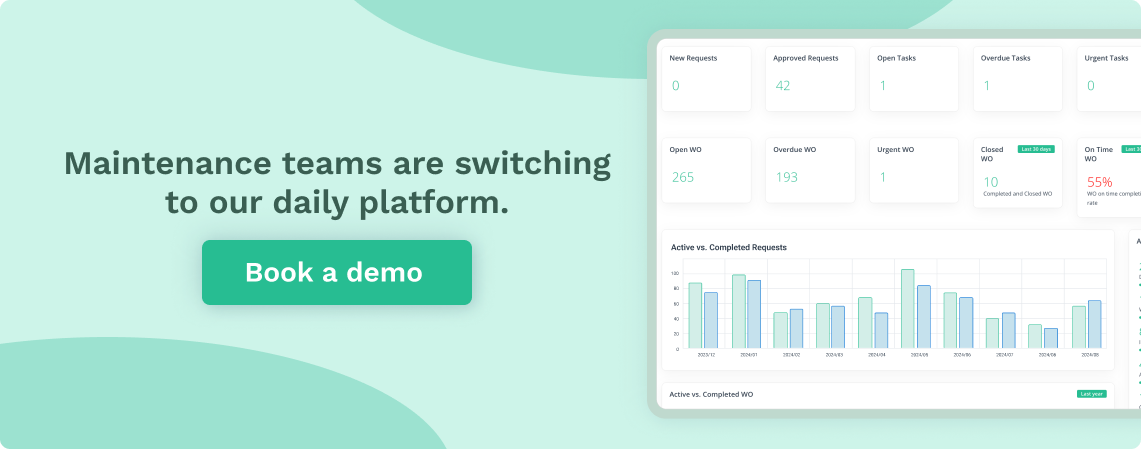
Some ways you can plan ahead are:
- Use a CMMS to track the lifecycle of your assets and get notified when a machine has exceeded its useful life.
- Schedule preventive maintenance tasks so they don’t go unnoticed and end up costing more to fix than simple maintenance.
- Increase productivity to save money. By automating some maintenance tasks, such as scheduling work for your team, you can increase productivity and get more done in less time.
- Check for deficiencies in energy efficiency, such as ventilation or leaks. By tracking assets and spare parts, you can identify where you are losing money, or which assets could benefit from installing more energy-efficient solutions.
Feature
Like any machine, a building and its assets will age if it is not inspected and maintained on a regular basis. Vulnerabilities go unnoticed; day-to-day operations begin to crumble.
Think of a leaky pipe that goes unnoticed until it bursts and turns into a flood that destroys everything behind it. Regular maintenance, on the other hand, provides consistent building function by:
- Regularly maintained building components are less likely to fail, causing breakdowns and outages.
- Regularly reviewed assets ensure they are up to date and in sync with code.
Obey
Regular building maintenance is critical to ensuring you comply with ever-changing building and safety codes, as well as state and federal regulations.
Maintaining permission is important to eliminate security risks and reduce your liability exposure.
Industries that Perform Building Maintenance
Facilities that rely on building maintenance include:
Apartments: Apartments require maintenance both indoors and outdoors. Regular inspections, maintenance, and repairs are carried out to ensure everything is in perfect condition.
Business Premises: Every building needs maintenance services. In fact, most smaller sites outsource maintenance services, while larger companies have in-house maintenance departments to oversee maintenance.
Government Facilities: Government buildings such as post offices, city buildings, and libraries require maintenance to remain in good condition for public use and safe use.
Top Building Maintenance Tips to Follow
While every business has its own unique maintenance needs, there are a few key points to consider. When it comes to build and order management, you need consistent and understandable workflows. Here are the 5 most important things you need to know to improve your building and facility management.
-
Keep your maintenance technician informed
Communication is key to maintenance planning and management. For maintenance technicians, maintenance supervisors, tenants, and management, you need to ensure that you need to communicate on a regular basis. Without consistent communication, you may find that you are dealing with outdated information, which creates errors in your schedule.
Have you ever turned up at a location for maintenance only to find out the customer isn’t home and you can’t visit? With real-time updates and SMS alerts, you can easily keep your business and customers in sync.
-
Research if your repair service is up to specification
For your building and equipment maintenance program, you must ensure that all requirements of the manufacturer’s warranty are met. Researching your warranty and manufacturer requirements will give you details on what maintenance is required and at what intervals. This information is key to planning proper maintenance work, so you can be confident you are delivering quality work to your clients.
-
Make sure your service technicians are properly trained
When it comes to equipment maintenance, your team needs to have the right skills before going on-site. Without the right skills and training, your business can suffer from job deficiencies, poor quality, and lack of consistency.
There are countless certifications, internships, and apprenticeships that can help improve and expand a technician’s skills and knowledge.
-
Security is essential
Every industry professional knows that safety is paramount on any job site. If your workplace does not have proper PPE or risk assessments, you risk injury and breaches of health and safety regulations, leaving your business vulnerable to lawsuits.
When you have a building maintenance system that allows you to easily follow safety checklists and conduct on-site risk analysis, SWMS, and documentation, you can ensure your team always keeps safety a priority.
-
Checklists make your life easier
One of the most important tips for your facility and building maintenance is a comprehensive checklist system. Without checklists, you’ll find that your work is often inconsistent and your field technicians are likely to make more mistakes. In this case, you may find that your tests and reports also become redundant.
If you have a preventative maintenance checklist, your technician can easily check each step. This type of maintenance work helps to improve the quality of work. Your list doesn’t have to be overly complicated, either. Simple steps are often more effective, such as checking your lighting system or checking your smoke detectors, or cleaning your air conditioner filters.
Try now for free
Try for free today and get started with the end-to-end software you need.
What’s on the Building Maintenance Checklist?
External Structure
Check the exterior of the building. Walls, masonry, foundations, arches, roofs, canopies, and all other exterior components should be regularly inspected regularly.
A landlord inspection checklist usually includes:
- Inspect roofs, roof gutters, downspouts, and gutters
- Check roof panels for cracks
- Pay attention to external hazards such as standing water
- Secure all exterior stairs and railings
- Check the condition of driveways, parking lots, and sidewalks
Windows and Doors
Windows and doors don’t need to be replaced often, but minor repairs may be needed. Locks and hinges wear out over time and keeping them in good condition is necessary for tenants’ safety. Check the small components of all windows and doors annually to make sure they are still strong and safe.
Lighting
Make sure all exterior and interior lights are safe and working. In addition to replacing light bulbs, you’ll want to make sure switches, transformers, and all other controls are working properly. Lighting surfaces should be cleaned regularly, but additional inspections can be done quarterly.

When checking to light, don’t forget to make sure the exterior lights are working properly and illuminating the designated area. For example, tenants will feel safe in a lighted parking lot, so don’t neglect this area.
Pipes
Unexpected plumbing problems can be an absolute nightmare for landlords. It’s often difficult to spot plumbing problems before they erupt, but there are a few things to check. Landlords often check the following when performing preventive maintenance on a facility:
- Replace valves at recommended intervals
- Check all couplings for leaks
- Check water heaters and boilers; recommended service
- Change and top up oil, lubricant, and refrigerant as needed
- An annual inspection of the sump pump and sump pump
It’s best to have a specialist inspect particularly critical areas, such as a swimming pool, annually or prior to heavy use. Otherwise, make sure to include sanitation inspections on your quarterly checklist.
Fire fighting equipment
Many areas require fire protection equipment to be serviced at least annually. Ensure that all fire fighting equipment is properly stored, displayed, and maintained in accordance with applicable regulations. Buildings with crawl spaces, fire escapes, and sprinkler systems should also be inspected regularly.
Air Conditioning
All HVAC systems require regular cleaning and maintenance. It’s best to schedule regular visits by experts to make sure these pieces of equipment don’t break down without warning. Tenants and staff can be very uncomfortable if an HVAC system fails, so checking it is a high priority, especially before heavy use. It is recommended to do this twice a year.
Inside Danger
Internal hazards in common areas and even rental units should be checked regularly to avoid injury. Damaged floors, peeling paint, or loose lighting fixtures can pose a safety hazard. When performing preventive inspections, closely monitor high-risk areas.
Additionally, you should make sure that all smoke detectors, sprinklers, and carbon monoxide monitoring systems are working properly. Change batteries regularly and make sure all emergency exits are functioning properly.
Electrical
As with plumbing, checking electrical systems can be a challenge unless something is wrong. Plan to have your building’s electrical installation inspected by a professional every four years. Some areas may have requirements on when to do this, so check your local laws to plan your electrical equipment preventive maintenance program.
Building Maintenance Software
Building maintenance management can be overwhelming without a system in place to coordinate and organize maintenance activities. Computerized Maintenance Management System (CMMS) software provides a single platform for managing the building maintenance. Using a CMMS, maintenance, and facilities managers can get a bird’s-eye view of all maintenance activities, track building and equipment maintenance costs, and schedule preventive maintenance tasks.
How to Improve Building Maintenance Using CMMS Software
Building Maintenance System is an all-in-one workplace management tool that helps you manage equipment, schedule maintenance, create work orders, and track inventory.
CMMS building maintenance tool that helps you spot issues with your building maintenance data in real-time. It also has built-in workflows to notify your team of maintenance issues or automatically trigger resolution. Built-in reports give you a complete view of savings opportunities, existing issues, and everything you need to keep your building efficient.



